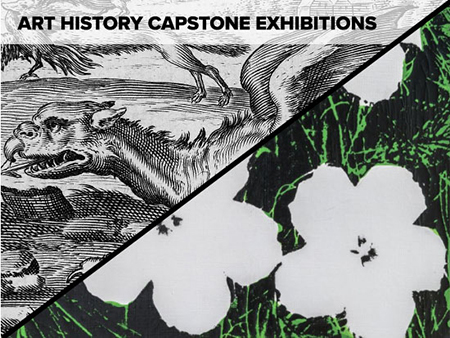 The University of Alabama at Birmingham Department of Art and Art History presents the 2021 Art History Capstone Exhibition at the UAB Art Lab, UAB Humanities Building, room 100, from Tuesday, Nov. 16-Friday, Nov. 19, featuring research curated by two senior art history students, Katie Davis and Simon Peeples.
The University of Alabama at Birmingham Department of Art and Art History presents the 2021 Art History Capstone Exhibition at the UAB Art Lab, UAB Humanities Building, room 100, from Tuesday, Nov. 16-Friday, Nov. 19, featuring research curated by two senior art history students, Katie Davis and Simon Peeples.
Davis, an art history major with a minor in art studio from Talladega, Alabama, presents “Through the Female Gaze: A reflection on more than a century of female creativity in the U.S.”
Davis’ exhibition discusses works of selected female artists starting in the late 19th century to today whose works have been thought to have greatly impacted feminist art in the United States. Drawing on the reproductions of oil paintings, sculpture, lithographs and mixed media pieces, this show contextualizes the works of the prominent American artists within the history of the four waves of feminism. Each of the selected artists whose work is being discussed in the exhibit, such as Edmonia Lewis, Mary Cassatt, Elizabeth Catlett, Georgia O’Keeffe, have greatly contributed to feminist art by challenging societal norms in different ways and through various artistic means.
“This includes asserting their careers in what was historically considered a male-dominated field, conveying ideas of femininity, ‘mirroring” the viewer’s gaze, refashioning self-portraits and conveying emotion through their abstract pieces,” Davis shared. “The exhibit also highlights the work of selected women UAB BFA students and reflects on how the work of contemporary female artists compares to their historical models, as well as how each of the student artists reflects on topics associated with third and fourth wave feminism such as body positivity and intersectionality.”
Peeples, an art history and chemistry major from Daphne, Alabama, presents “Transmutation of Art, Chemistry, and the Public Perception of Alchemy in Early Modern Europe.”
“Alchemy is often understood as the pseudo-science precursor to chemistry filled with mystical applications, as well as a particular interest in transmuting other metals to gold. However, alchemy can be seen as a diverse field with many different types of practitioners with different goals and a varying adherence of mystical philosophies throughout time,” Peeples explained.
“Visual sources of alchemists and their work provide context of who alchemists were, their goals and methodologies. This exhibition aims at exploring these subjects drawing on reproductions of European oil paintings, woodcuts and illustrations, some coming from UAB’s Reynolds-Finley Historical Library.”
In Peeples’ exhibit, he details how some of these sources are often encoded in a variety of symbols ranging from angels to dragons. To understand these images in their original context and in an interdisciplinary manner, meanings of symbols are provided by scientific historians like Lawrence Principe. Additionally, he asserts that creative projects from Jacqueline Nikles’, Ph.D., onors organic class demonstrate how symbols can be employed to express modern chemical principles.
The exhibitions will be open to the public during viewing hours 12:30-5 p.m. Tuesday, Nov. 16-Friday, Nov. 19. A public presentation of these students’ research will be held at 3:30 p.m. Thursday, Nov. 18.
The Bachelor of Arts degree in the College of Arts and Sciences Art History capstone course enables students to fortify their knowledge of art history and convey their qualifications as emerging professionals. In this exhibition, both students demonstrate their interests and knowledge with the public.